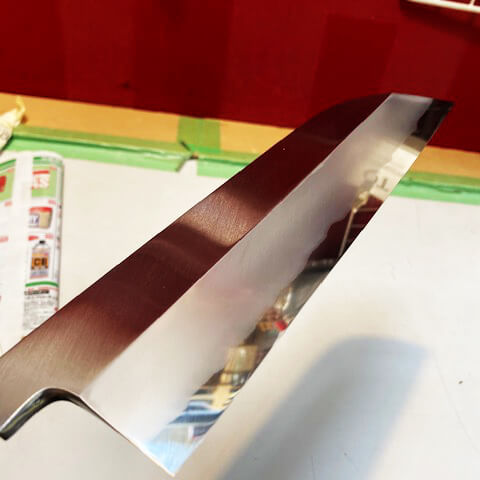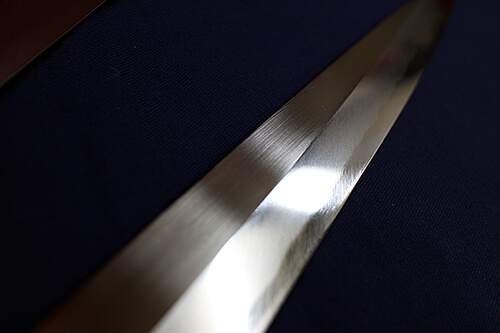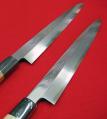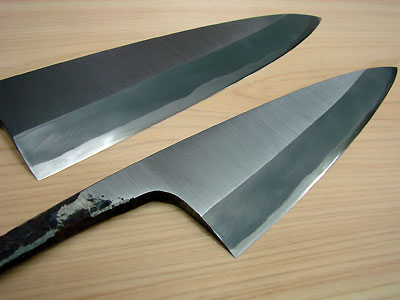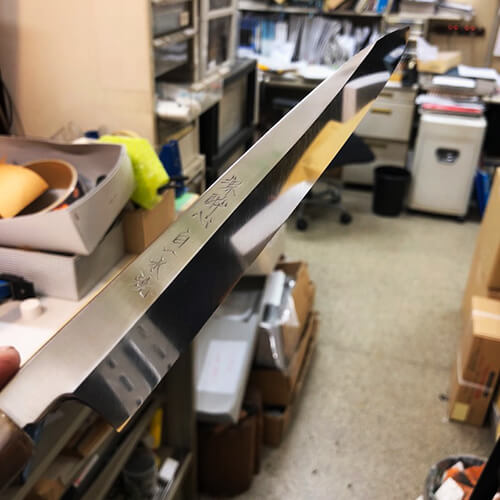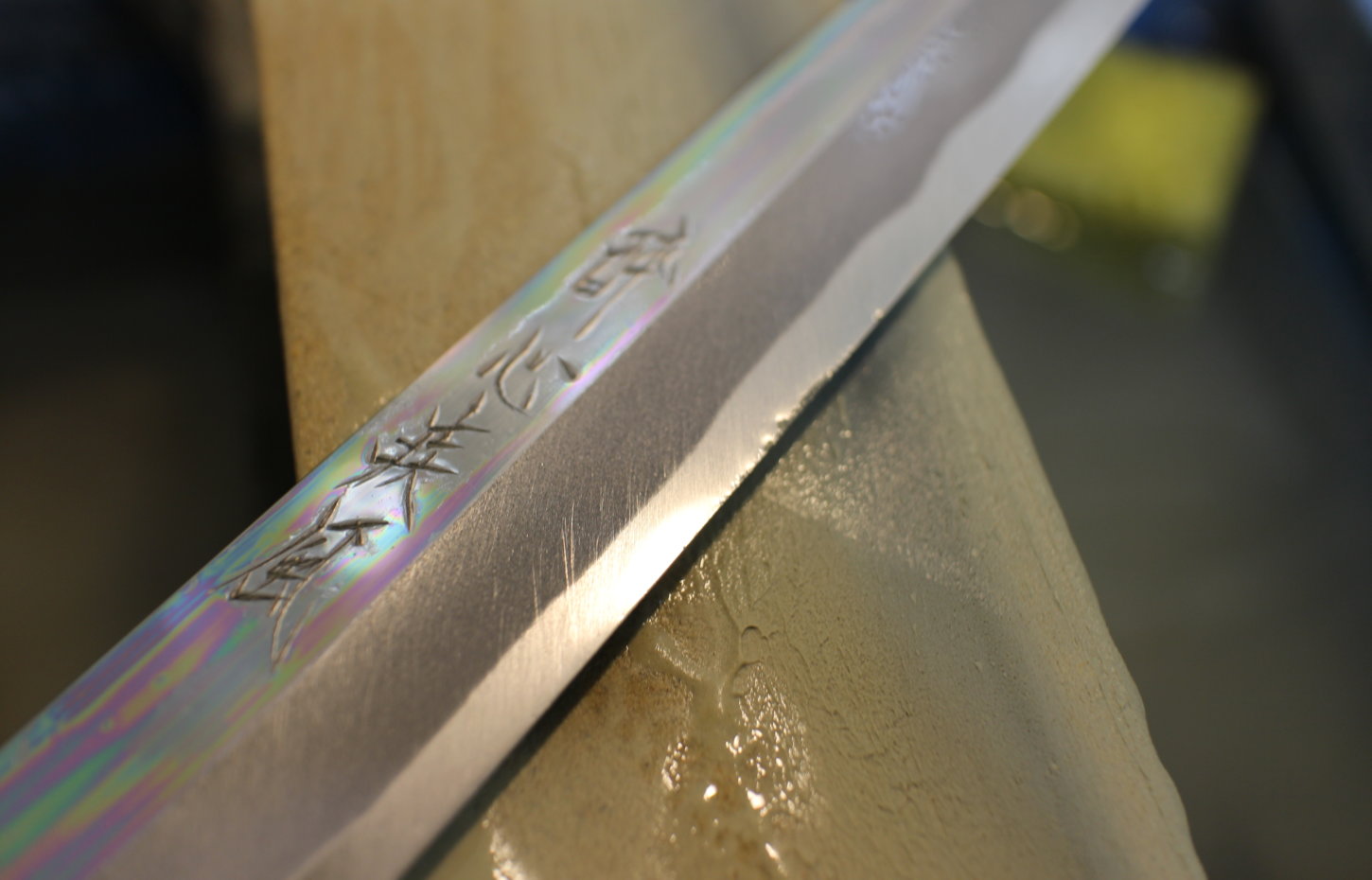Experiment Part Two
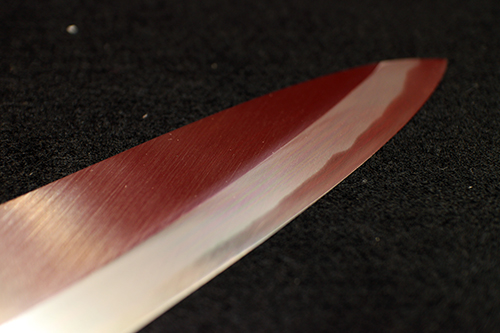
Over the weekend, I’m experimenting further.
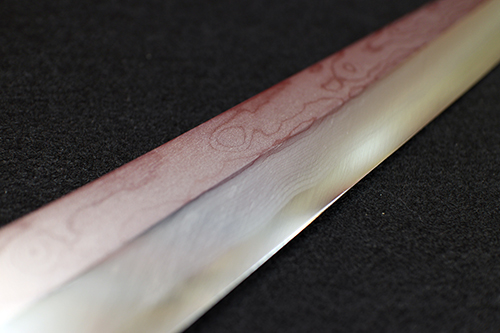
The other day, I sharpened my multi-layered steel knife. It feels like there’s still some thickness left on the blade edge side…
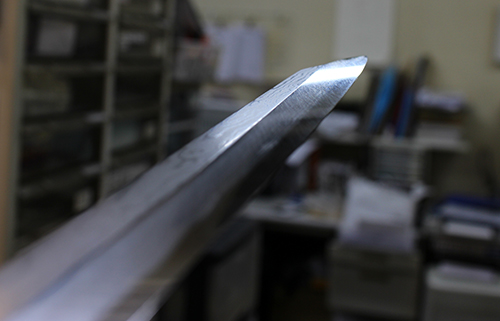
When I look through it, it’s like this. It seems like it could get better with a bit more sharpening, but from here on, the area touching the sharpening stone increases… and it starts to feel a bit daunting (laughs). It’s like there’s some resistance typical of multi-layered steel…
In this state, it was sticking to the sharpening stone and becoming challenging to sharpen. So, I decided to set this knife aside for now…
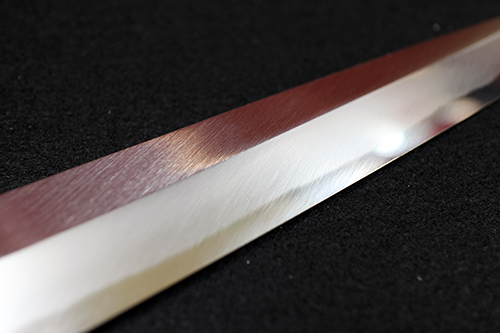
I decided to continue sharpening Doi Ituo’s White #3 Steel Yanagi blade with the determination to refine the edge. The Yanagi blade has a narrower cutting width, making it easier to sharpen. There’s still some residue on the edge, but I stopped at spots where it seemed like there might be a convex edge forming here and there!
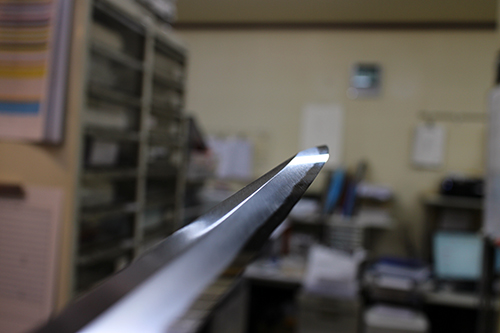
When I look through it, it’s like this. Near the tip, it’s got a slight Hamaguri-style shape going on. If I try to sharpen that area more, the curve at the tip might get eaten away by the sharpening stone and change its shape. To overcome this, I think I’ll have to use a pointy sharpening technique, like for a Deba knife…
I’ll set this knife aside for now too (laughs).
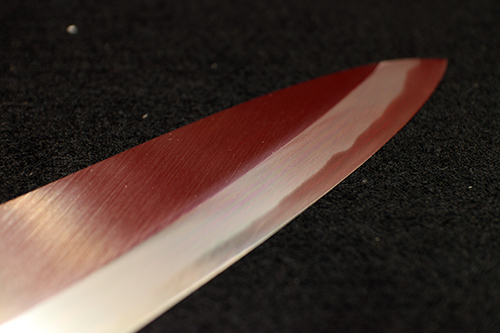
I had a Funayuki ‘Momiji’ 180mm knife, so I decided to sharpen it with a focus on the curve of the tip. I could have used a Deba knife for this, but I wanted quick results, so I chose a thinner knife with a strong curve!
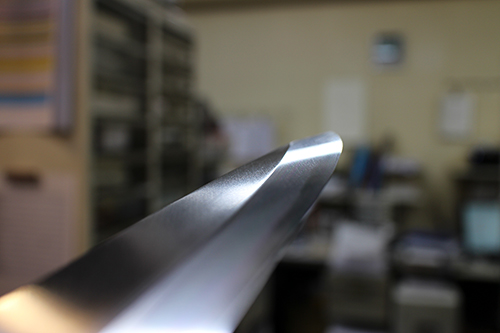
While there’s a slight improvement, it’s starting to feel just as I imagined – smoother slicing. Sharpening a knife that has already transitioned into a rounded edge (a convex edge) during use is quite challenging. I’ve considered various methods to quickly bring it back to a sharp edge, but nothing seems to be the magic solution.
Using a diamond sharpening stone that minimizes the need for flattening, relying on its abrasive power, might be the best approach… or perhaps, entrusting the knife to a professional sharpener who can swiftly restore it.
When you buy a brand new knife, starting with the initial honing (Honbaduke) to establish a solid foundation might make maintenance easier. However, even with proper care, knives can develop minor chips during use, prompting further honing and transitioning to a rounded edge. This is quite common.
Interestingly, well-sharpened knives might be more prone to chipping. However, they definitely possess greater strength compared to rounded edges!
Please note that when considering the steps beyond this point, proceed at your own risk!
To sharpen the inner edge, begin by preparing a flat sharpening stone. The fundamental technique involves sharpening the knife at a 45° angle where the stone and knife intersect. However, consciously aiming for a slightly more perpendicular angle helps in honing the Shinogi side more effectively.
If you can maintain this angle consistently, you’ll be able to sharpen the blade tip smoothly as well. When sharpening with the stone and knife parallel, it rounds the edge. I suspect this has something to do with the human skeletal structure.
Sharpening at around a 60° angle is easier but tends to result in a rounder blade tip. Note: Sharpening at a right angle means the knife’s angle is 0°, while sharpening parallel means the knife’s angle is 90°. I’m speaking in broad strokes about angles here. Depending on where you’re sharpening (the tip or base of the blade) and the type of knife, altering the angle can yield a clean and functional edge.
Feel free to explore and experiment with different angles.
hibishugyo
- 2016-02-22
